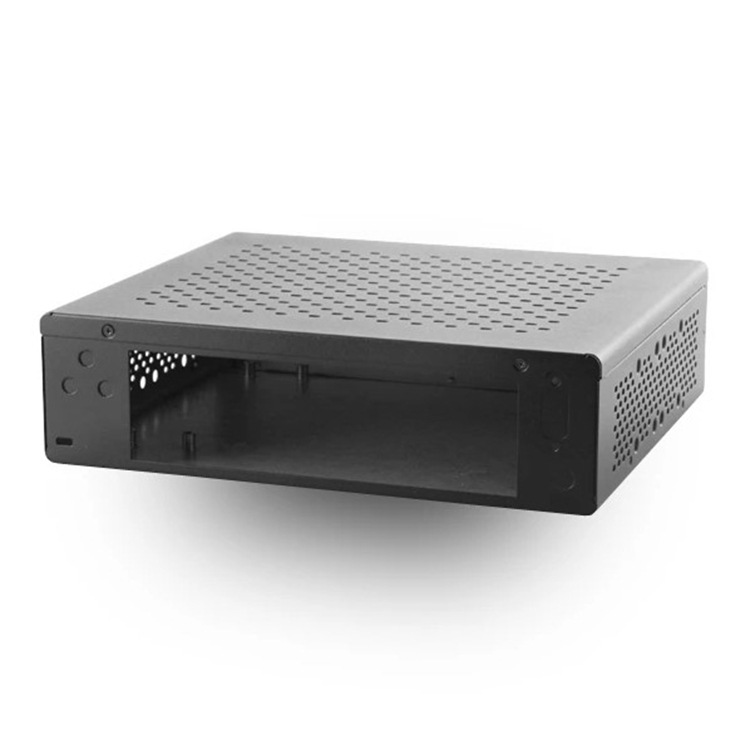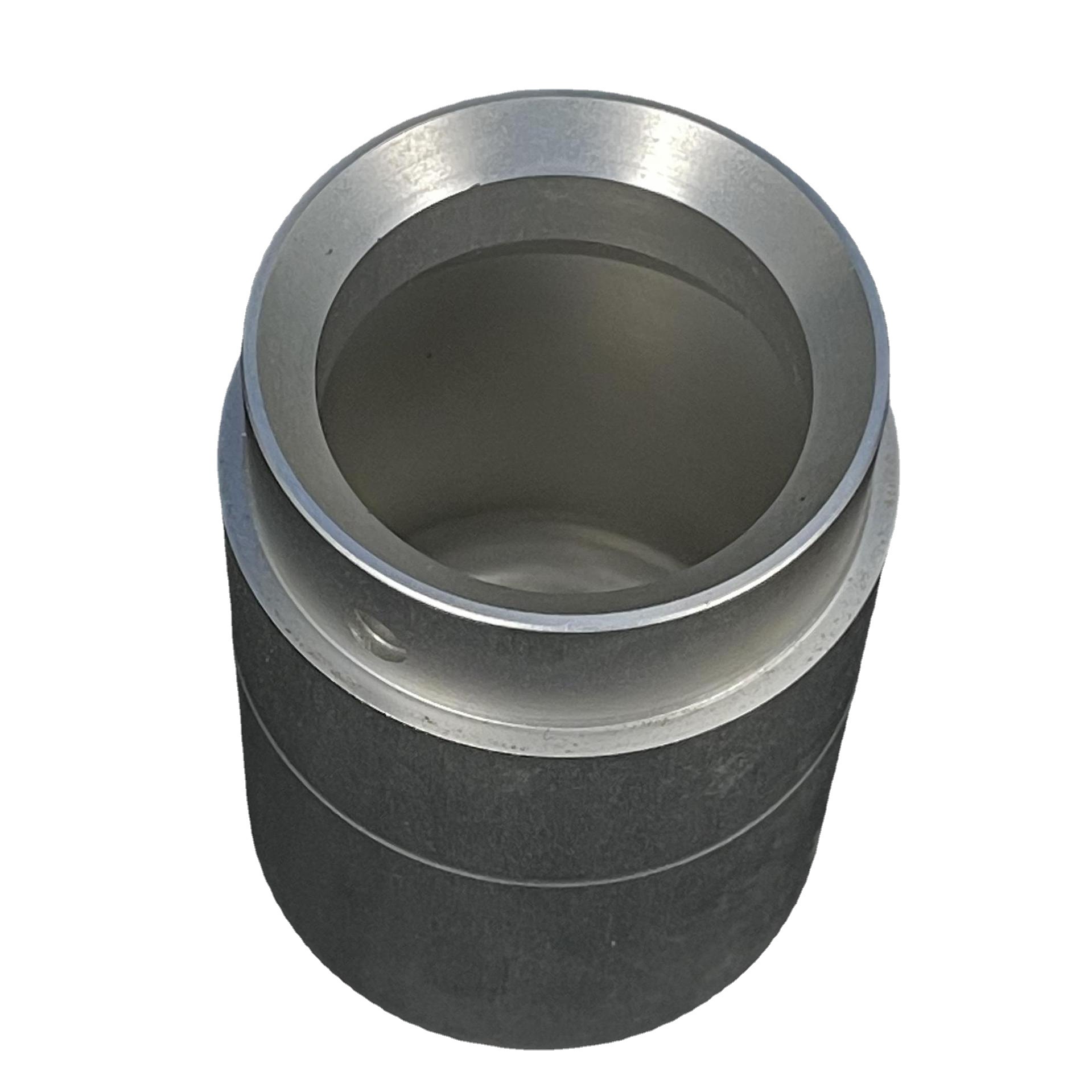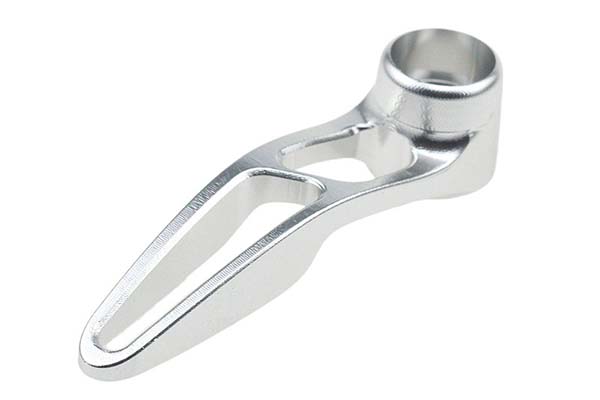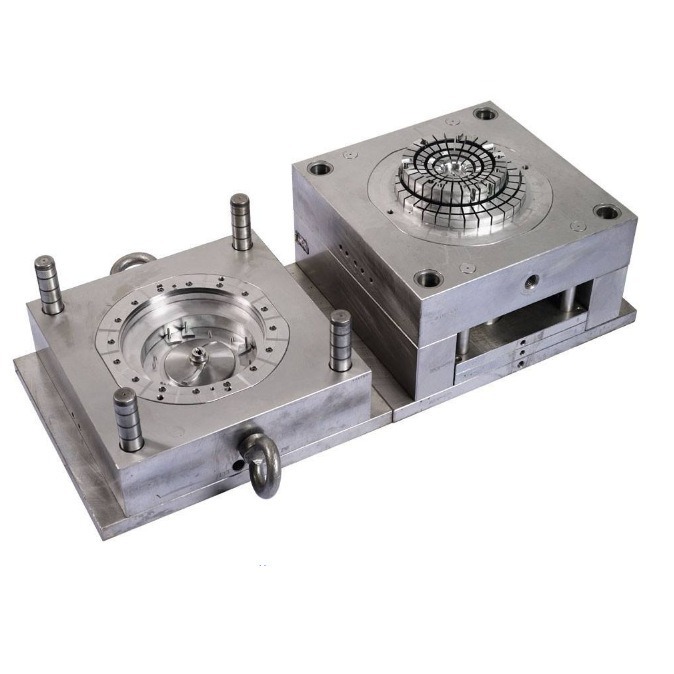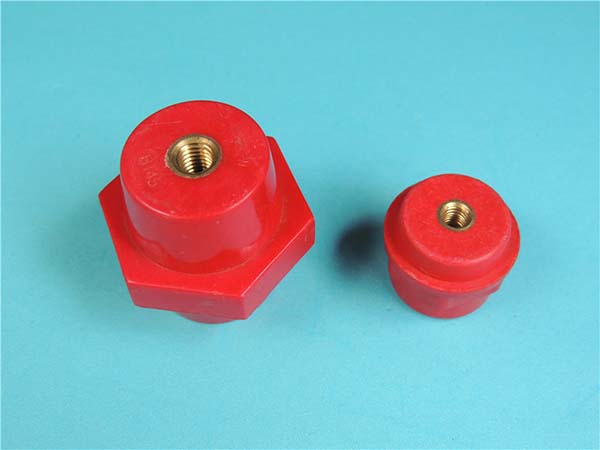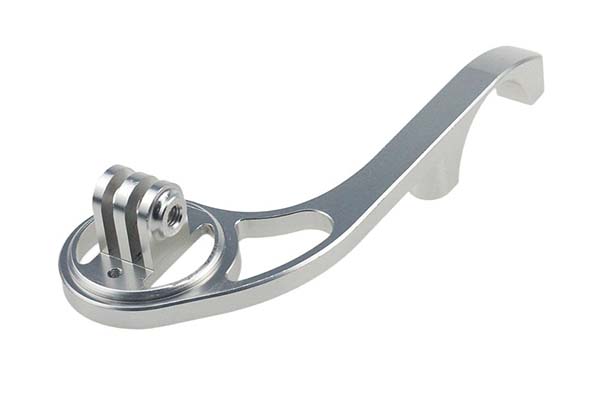Manufacturers working with high-temperature and corrosive environments often turn to SS321 stainless steel for its unique combination of heat resistance and stability. As an austenitic stainless steel, it relies on titanium-stabilized chemistry to prevent carbide precipitation during welding and high-heat exposure, but machining it presents distinct challenges. Its titanium content, while enhancing intergranular corrosion resistance, increases work hardening tendencies, leading to rapid tool wear and elevated cutting forces. Additionally, its non-magnetic properties and high ductility demand precise cutting parameters to avoid chip control issues. Distinguishing its capabilities from similar grades like SS347 or SS304 is crucial to avoid performance gaps in high-temperature applications. This guide addresses these pain points, offering proven strategies to optimize CNC machining SS321 for efficiency, quality, and reliability in extreme thermal environments.
Material Overview of SS321
SS321 stainless steel is an austenitic alloy engineered for high-temperature stability and corrosion resistance:
- Mechanical properties: It offers a tensile strength of 515 MPa, yield strength of 205 MPa, and hardness of 18-22 HRC in the annealed state. It retains 70% of its room-temperature strength at 800°C, outperforming many austenitic grades in high-heat applications.
- Corrosion resistance: Excellent in oxidizing environments and moderate chemicals, with 17-19% chromium and 9-12% nickel providing a robust passive layer. Its titanium-stabilized structure prevents intergranular corrosion after welding, making it superior to unstabilized grades like SS304 in high-temperature service.
- High-temperature performance: Maintains structural integrity up to 800°C, resisting scaling and oxidation. Its titanium carbides form at high temperatures, stabilizing the material against grain boundary degradation.
- Chemical composition: Contains 17-19% chromium, 9-12% nickel, 0.4-0.6% titanium (minimum five times the carbon content), and 0.08% maximum carbon. This composition ensures intergranular corrosion resistance even after prolonged high-heat exposure.
- Magnetic properties: Non-magnetic in the annealed state, though cold working can induce slight magnetism—unlike ferritic or martensitic stainless steels.
- Weldability: Excellent, with no post-weld annealing required for most applications. The titanium stabilizer binds with carbon, preventing chromium carbide formation in the heat-affected zone (HAZ).
These traits make SS321 ideal for high-temperature applications like exhaust systems, furnace components, and aircraft parts exposed to thermal cycling.
CNC Machining Processes for SS321
Core Machining Operations
CNC machining SS321 requires careful control to manage work hardening and chip formation, with processes tailored to its high-temperature design:
- CNC milling: Effective for shaping furnace brackets and exhaust manifolds. Climb milling reduces work hardening by minimizing tool contact with already deformed surfaces, lowering cutting forces by 10-15%.
- CNC turning: Suitable for cylindrical parts like heat exchanger tubes and jet engine components, with moderate feed rates to balance material removal and heat buildup.
- CNC drilling and CNC boring: Challenging due to high ductility; sharp tools and peck drilling prevent chip clogging, critical for deep holes in boiler components.
- Machining centers and multi-axis machining: Enhance efficiency for complex parts like aircraft exhaust stacks, ensuring dimensional consistency across heat-exposed surfaces.
Optimal Cutting Parameters
| Operation | Cutting Speed (m/min) | Feed Rate (mm/rev) | Depth of Cut (mm) |
| CNC milling (carbide) | 80-140 | 0.1-0.2 | 1-3 |
| CNC turning (carbide) | 100-180 | 0.12-0.25 | 1.5-4 |
| CNC drilling (carbide) | 70-120 | 0.08-0.15 | 1-2.5 |
These parameters account for SS321’s higher work hardening tendency compared to SS304, with cutting speeds 5-10% lower to minimize heat-induced material hardening.
Tool Selection and Tooling for SS321
Choosing the Right Tools
Tool selection for CNC machining SS321 focuses on wear resistance and heat management:
- Cutting tools: Carbide tools are preferred over high-speed steel due to their superior heat resistance. Fine-grain carbide (WC-Co with 6-8% Co) offers the best balance of toughness and wear resistance for SS321’s abrasive titanium carbides.
- Tool coatings: AlTiN coatings extend tool life by 40-60% compared to uncoated carbide, thanks to their high-temperature stability (up to 800°C) and reduced friction.
- Tool geometry: Positive rake angles (5-10°) reduce cutting forces, while sharp edges for cutting minimize work hardening. Round inserts with large radii work well for roughing, while square inserts with honed edges excel in finishing.
- Tool holders: Rigid, shrink-fit holders minimize tool deflection, critical for maintaining tolerances in high-force cutting—common when machining thick-walled furnace components.
- Coolant delivery systems: High-pressure coolant (70-120 bar) directed at the cutting zone flushes chips and reduces heat, preventing work hardening and tool overheating.
Chip Control Strategies
Poor chip control in SS321 leads to tool damage and surface defects. Effective strategies include:
- Using tools with aggressive chip breakers designed for austenitic stainless steels, especially in turning operations on large-diameter exhaust components.
- Adjusting feed rates to promote short, curly chips—avoiding long, stringy chips that wrap around tools and cause heat buildup.
- Implementing high-volume coolant flow (10-15 L/min) to flush chips away from the cutting zone, preventing re-cutting and work hardening.
Surface Finish and Quality Control
Achieving Desired Surface Characteristics
SS321’s surface finish directly impacts high-temperature performance, as rough surfaces trap heat and accelerate oxidation:
- Surface roughness: Achievable Ra values range from 0.8 μm (finish machining) to 3.2 μm (roughing). Exhaust components often require Ra ≤ 1.6 μm to minimize heat retention, while furnace parts may need Ra ≤ 3.2 μm for general use.
- Surface finish requirements: Aircraft parts benefit from smooth finishes (Ra ≤ 1.6 μm) to reduce drag and heat buildup, while industrial furnace components require consistent finishes to ensure uniform heat distribution.
- Finishing processes: Grinding after machining achieves tight tolerance surfaces (±0.001 mm) for critical components, while polishing reduces surface defects to enhance corrosion resistance in cyclic thermal environments.
Quality Control Measures
- Inspection methods: Coordinate Measuring Machines (CMM) verify dimensional accuracy, while profilometers check surface roughness (Ra, Rz). High-temperature tensile testing ensures strength retention meets specifications for thermal applications.
- Quality control standards: Compliance with ASTM A240 (sheet/plate) and ASTM A276 (bars) guarantees material consistency, including titanium content and intergranular corrosion resistance.
- Surface defects to monitor: Tool marks and scratches act as stress risers in thermal cycling. Electrochemical finishing removes these defects, improving both performance and longevity in high-heat environments.
Heat Treatment and Post-Machining Processes
Heat Treatment for SS321
SS321 requires specific heat treatment to optimize its high-temperature performance:
- Solution annealing: Heating to 1040-1150°C, followed by water quenching, dissolves carbides and ensures a uniform austenitic structure. This process softens the material (to 18-22 HRC) and maximizes corrosion resistance, typically performed before machining.
- Stress relief annealing: Heating to 300-500°C for 1-2 hours reduces residual stresses from machining, preventing distortion in large parts like furnace casings during high-temperature service.
Post-Machining Processes
- Post-machining cleaning: Ultrasonic cleaning removes coolant residues and chips, preventing contamination that could compromise high-temperature performance.
- Passivation: A nitric acid treatment enhances the chromium oxide layer, boosting corrosion resistance by 30-40% in moist high-heat environments—critical for exhaust systems exposed to rain and humidity.
- Shot peening: Optional for high-stress components, this process adds surface compressive stress, improving fatigue life by 20-30% in cyclic thermal applications like aircraft exhausts.
Applications of SS321 Machined Parts
SS321 stainless steel excels in environments where high-temperature stability and corrosion resistance are critical:
- Aerospace components: Aircraft exhaust stacks, turbine casings, and cabin heaters—withstanding temperatures up to 800°C in engine compartments.
- Industrial furnace parts: Heating elements, furnace liners, and annealing boxes—resisting scaling and oxidation in continuous high-heat operation.
- Automotive exhaust systems: Manifolds and catalytic converter housings—handling thermal cycling from -40°C to 650°C without cracking.
- Chemical processing equipment: Reactors and pipes operating at elevated temperatures—combining heat resistance with intergranular corrosion resistance.
- Heat exchangers: Tubes and baffles transferring heat in power plants and refineries—maintaining structural integrity under thermal stress.
In aircraft exhaust systems, for example, SS321 components last 3-4x longer than SS304 due to its titanium stabilization, justifying its higher material cost in critical applications.
Technical Specifications and Standards
Adhering to industry standards ensures SS321 parts meet high-temperature performance requirements:
- ASTM standards: ASTM A240 (sheet/plate), ASTM A276 (bars), and ASTM A312 (tubing) define chemical composition, mechanical properties, and quality requirements for SS321.
- ASME standards: ASME SA-240M and SA-276 specify requirements for pressure vessel and boiler components, ensuring safety in high-temperature, high-pressure applications.
- ISO/EN standards: ISO 15510 and EN 1.4541 cover technical delivery conditions, with EN 1.4541 aligning closely with SS321 specifications.
- Machining tolerances: Achievable tolerances of ±0.01 mm for small parts and ±0.05 mm for large components, with tighter tolerances possible via post-machining grinding.
Challenges and Solutions in Machining SS321
Overcoming Key Machining Challenges
CNC machining SS321 presents several challenges, but targeted solutions yield reliable results:
- Work hardening: More pronounced than in SS304 due to titanium content. Using sharp AlTiN-coated carbide tools and light depths of cut (≤2 mm) minimizes work hardening by reducing tool contact time.
- High cutting forces: 10-15% higher than SS304, requiring rigid machine tools with high torque spindles (≥35 Nm) to prevent tool deflection and maintain accuracy.
- Heat generation: Friction-induced heat softens tools and accelerates work hardening. Intermittent cutting cycles and high-pressure coolant (100 bar) dissipate heat, extending tool life by 30-40%.
- Tool wear: Rapid wear from titanium carbides and high cutting forces. AlTiN-coated carbide tools last 40-60% longer than uncoated tools, offsetting their higher cost in high-volume production.
- Chip evacuation: Stringy chips can wrap around tools, causing damage. Using tools with chip breakers and high coolant flow rates flushes chips, preventing re-cutting and work hardening.
Cost and Efficiency Considerations
Balancing Performance and Cost
CNC machining SS321 is more expensive than machining SS304, but strategic choices optimize efficiency for high-temperature applications:
- Machining cost: 20-30% higher than SS304 due to slower cutting speeds, increased tool wear, and higher material cost. This premium is justified by 3-4x longer service life in high-temperature environments, reducing replacement frequency.
- Tool cost: AlTiN-coated carbide tools cost 2-3x more than uncoated carbide but reduce replacement frequency by 50-70%, lowering total tooling expenses in long runs.
- Production rate: Typical rates of 15-25 parts per hour for small components, 70-80% of SS304’s rate but necessary for achieving high-temperature performance.
- Efficiency improvements: High-speed machining centers with rigid frames reduce cycle times by 15-20% by handling higher cutting forces without vibration.
Comparison with Other Materials
How does SS321 compare to similar high-temperature materials?
| Material | High-Temp Strength (800°C) | Intergranular Corrosion Resistance | Machinability (Relative) | Cost (Relative) |
| SS321 | 70% of RT strength | Excellent (titanium-stabilized) | Good (75%) | High |
| SS347 | 72% of RT strength | Excellent (niobium-stabilized) | Good (70%) | High |
| SS304 | 60% of RT strength | Fair (unstabilized) | Very Good (90%) | Medium |
| Inconel 600 | 85% of RT strength | Excellent | Poor (50%) | Very High |
| SS316 | 65% of RT strength | Very Good | Good (80%) | Medium-High |
- SS321 vs. SS347: SS321 offers better machinability (75% vs. 70% relative to SS304) and similar high-temperature strength, making it preferred for complex parts. SS347 retains strength slightly better above 800°C but is more expensive.
- SS321 vs. SS304: SS321 provides superior intergranular corrosion resistance and 10% higher strength at 800°C, justifying its higher cost for high-temperature applications where SS304 would fail prematurely.
- SS321 vs. Inconel 600: Inconel 600 offers higher high-temperature strength but costs 3-4x more. SS321 is a cost-effective alternative for applications below 800°C.
Yigu Technology’s Perspective
At Yigu Technology, we specialize in CNC machining SS321 for aerospace and industrial furnace clients. Our data shows that AlTiN-coated carbide tools with 100-bar coolant reduce tool wear by 50% compared to standard setups. We recommend solution annealing before machining to ensure uniform titanium distribution and dimensional stability. For critical aerospace parts, we perform 100% CMM inspections and high-temperature testing to verify compliance with ASTM A240. Our expertise in machining titanium-stabilized stainless steels ensures SS321 components meet the strict high-temperature performance requirements of aircraft, automotive, and industrial applications—delivering reliable service in extreme thermal environments.
FAQ
- What makes SS321 ideal for high-temperature applications?
SS321’s titanium-stabilized chemistry prevents carbide precipitation at high temperatures, maintaining intergranular corrosion resistance and retaining 70% of its room-temperature strength at 800°C—outperforming unstabilized grades like SS304 in thermal environments.
- How does SS321’s machinability compare to SS347?
SS321 is easier to machine, with lower work hardening tendencies and better chip control, allowing 5-10% faster cutting speeds than SS347. Its titanium content causes less tool wear than SS347’s niobium, extending tool life by 10-15%.
- When should SS321 be chosen over SS304?
SS321 is preferred for applications involving welding or high temperatures (above 400°C), where its titanium stabilization prevents intergranular corrosion—a critical advantage over SS304, which is prone to grain boundary degradation in such conditions.

